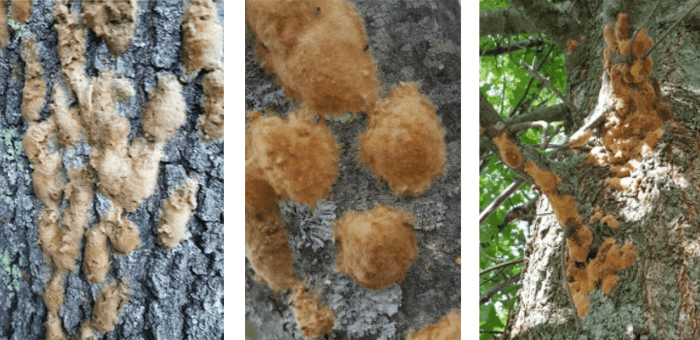New England’s oldest and most persistent insect pest has a new name: the spongy moth. For more than 100 years, Lymantria dispar had a common named based on a derogatory slur for people of Romani descent. In 2021, the Entomological Society of America decided to change the name of the species to be non-offensive, and on March 2nd 2022 the common name “spongy moth” was announced. This is the first changed name under ESA’s Better Common Names Project, which seeks to change the common names of species that contain derogatory terms, refer to invasive species by their native geographic range, or disregard the common names given by native communities.
The species new name refers to its spongy, tan-colored egg masses that are a familiar sight to residents of the northeast and great lakes. The moth spends the majority of its one-year life cycle as an egg, which makes this the most appropriate name. Egg masses laid on firewood or other objects can be easily transported to new areas.

Moving forward, our website, literature, and regional managers will use the updated name to refer to this common invasive pest.
Spongy moth larvae are voracious leaf chewing caterpillars and responsible for the damage the species inflicts. The eggs generally hatch from late April to mid-May. Keep your eye out for the eggs and the larvae, and remember that Arborjet solutions including TREE-age R10 and ACE-jet are effective treatments to protect your trees. Spring is a good time for treatment. Reach out to a local service care provider to treat your trees against spongy moth today.
Photo credit: Rob Gorden
